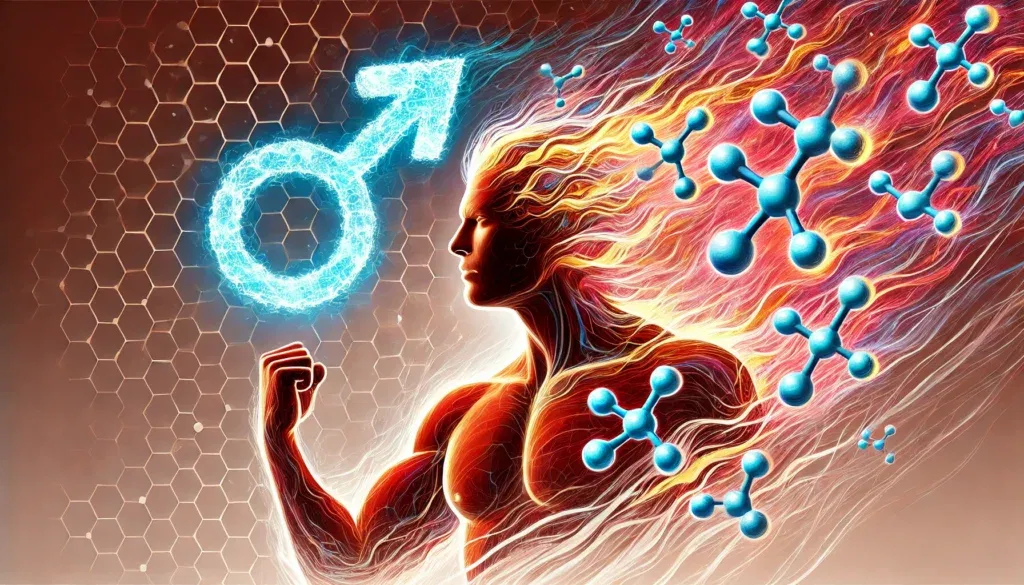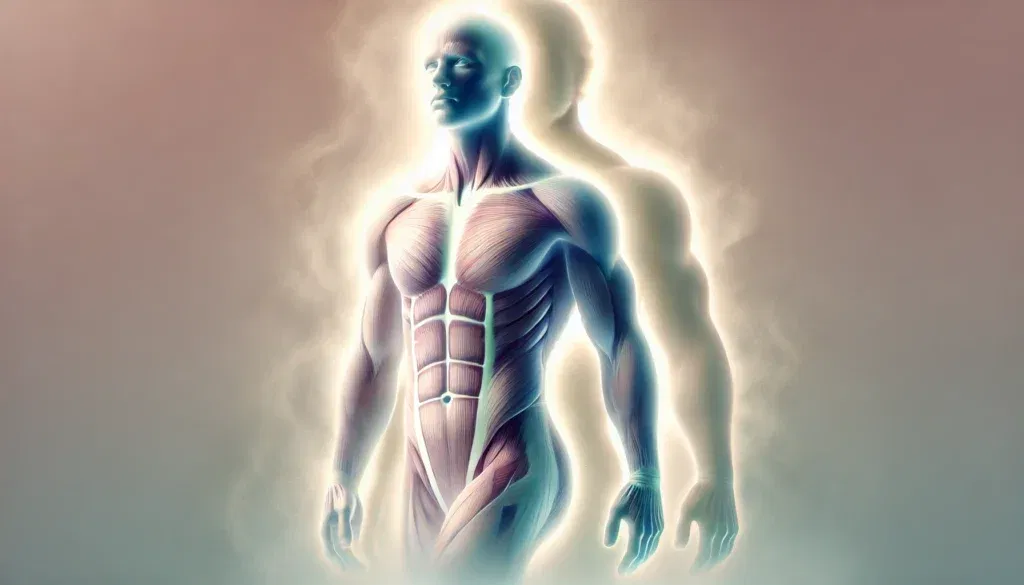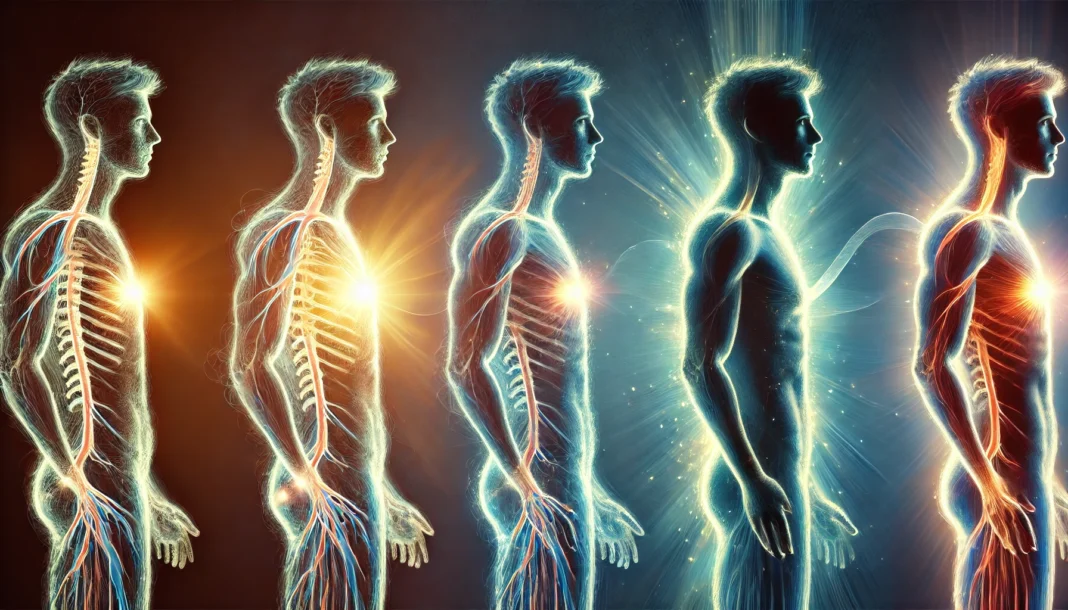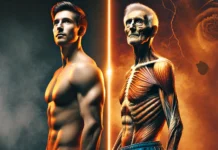Introduction
The concept of a “2nd puberty” in males has gained attention in recent years, as men experience significant hormonal changes beyond adolescence. While puberty is traditionally associated with teenage years, research indicates that men undergo a secondary hormonal shift later in life, often referred to as “andropause” or “male menopause.” This phase, commonly occurring between the ages of 30 and 50, is marked by changes in testosterone levels, body composition, energy levels, and even emotional well-being. Understanding 2nd puberty in males requires an in-depth look at how these biological changes affect various aspects of health and longevity.
The traditional view of male development includes the well-known Tanner stages, which outline physical growth during puberty. However, this framework does not account for the gradual hormonal shifts that continue into adulthood. Do men go through a second puberty? The answer is complex but essential for understanding the full spectrum of male health. By examining hormonal changes, symptoms, and health impacts, we can offer insights into managing this transition effectively.
You May Also Like: Does Testosterone Make You Look Older? The Truth About Hormones and Aging
Hormonal Changes During 2nd Puberty in Males
Hormones regulate nearly every bodily function, from metabolism to mood stability. Testosterone, the primary male sex hormone, is at the center of the changes associated with 2nd puberty in men. While testosterone levels peak during adolescence and early adulthood, they begin to decline at a rate of approximately 1% per year after the age of 30. This slow but steady reduction contributes to several physiological and psychological changes.
One of the primary hormones involved in 2nd puberty males experience is dehydroepiandrosterone (DHEA), a precursor to testosterone and other androgens. As DHEA levels decline, testosterone production decreases, leading to shifts in muscle mass, fat distribution, and energy levels. Additionally, increased levels of sex hormone-binding globulin (SHBG) reduce the availability of free testosterone, compounding the effects of hormonal decline.
Aside from testosterone, cortisol levels may rise during this period, increasing stress susceptibility and fat accumulation. Growth hormone levels, which regulate cell regeneration and metabolism, also decline, contributing to changes in skin elasticity, muscle recovery, and overall vitality. These hormonal shifts influence men’s health and longevity, making it critical to understand their broader implications.

Symptoms of 2nd Puberty in Men
The symptoms of 2nd puberty can manifest gradually, making them difficult to identify as a distinct phase of life. However, recognizing these changes is essential for proactive health management. The most common symptoms include:
1. Changes in Energy Levels and Fatigue
Many men in their late 30s and 40s report persistent fatigue, reduced motivation, and difficulty maintaining endurance in physical activities. This is largely attributed to declining testosterone and growth hormone levels, which are responsible for maintaining energy and vitality.
2. Altered Muscle Mass and Fat Distribution
Muscle mass naturally declines with age, but during 2nd puberty, this process accelerates. The reduction in testosterone impacts protein synthesis, leading to muscle loss and increased fat accumulation, particularly around the abdomen. This shift raises the risk of metabolic disorders, such as type 2 diabetes and cardiovascular disease.
3. Mood Fluctuations and Cognitive Changes
Hormonal changes affect neurotransmitter balance, leading to mood swings, increased irritability, and even depression. Some men also report brain fog, difficulty concentrating, and memory lapses. These symptoms highlight the neurological impact of hormonal shifts during this phase.
4. Sleep Disturbances
Testosterone plays a crucial role in regulating sleep cycles. As levels decline, men may experience insomnia, restless sleep, or frequent nighttime awakenings. Poor sleep quality further exacerbates fatigue, mood issues, and weight gain.
5. Changes in Libido and Sexual Health
Testosterone is essential for sexual function, and its decline can lead to reduced libido, erectile dysfunction, and changes in sperm quality. Many men experience shifts in sexual desire and performance, which can impact relationships and emotional well-being.
Tanner Stage Development and Its Relevance to 2nd Puberty
The Tanner scale is a widely used system for assessing physical development during puberty, but it does not account for later-life hormonal shifts. Traditional Tanner stages describe changes in genitalia, body hair, and overall growth in adolescence. However, as men enter 2nd puberty, they experience a different set of physiological changes that could be considered an extension of this developmental framework.
While the original Tanner scale does not apply to adult hormonal changes, some experts propose a “Tanner stage for adulthood,” recognizing that hormone-driven transformations continue beyond adolescence. This perspective encourages a more comprehensive approach to male health across the lifespan.
Health Impacts of 2nd Puberty in Males
Understanding the health impacts of 2nd puberty men experience is crucial for proactive health management. These changes affect multiple systems, including cardiovascular health, metabolic function, and mental well-being.
1. Cardiovascular Health
Testosterone plays a role in maintaining heart health by supporting healthy cholesterol levels and arterial function. Its decline has been associated with increased risks of hypertension, atherosclerosis, and heart disease. Additionally, increased cortisol levels contribute to higher blood pressure and inflammatory markers.
2. Bone Density and Joint Health
Declining testosterone and growth hormone levels contribute to reduced bone mineral density, increasing the risk of osteoporosis and fractures. Joint stiffness and decreased collagen production may also lead to chronic pain and reduced mobility.
3. Metabolic Changes and Weight Management
Lower testosterone levels often lead to insulin resistance, making it more difficult for the body to regulate blood sugar levels. This increases the risk of metabolic syndrome, which includes obesity, diabetes, and cardiovascular disease. Proper diet and resistance training can help mitigate these effects.
4. Psychological and Emotional Well-Being
The impact of 2nd puberty on mental health cannot be overlooked. The interplay between testosterone, serotonin, and dopamine affects mood stability and emotional resilience. Many men benefit from lifestyle modifications, including exercise, stress management techniques, and professional counseling to navigate these changes.
Managing and Adapting to 2nd Puberty in Males
To manage 2nd puberty effectively, men should adopt a proactive approach to their health. Lifestyle interventions, including resistance training, cardiovascular exercise, and dietary modifications, play a significant role in mitigating hormonal decline. Additionally, stress reduction techniques, such as mindfulness and meditation, can help balance cortisol levels.
For some men, testosterone replacement therapy (TRT) may be a viable option under medical supervision. However, TRT should be approached with caution, as it carries potential risks and side effects. Nutritional supplementation with vitamin D, zinc, and magnesium can also support hormonal balance naturally.

Frequently Asked Questions About 2nd Puberty in Males
1. Do men go through a second puberty, and how does it differ from adolescence?
Yes, men do go through a second puberty, though it is vastly different from adolescence. Unlike the rapid hormonal surges and physical growth of teenage puberty, 2nd puberty in males is a gradual process that occurs over decades, typically starting in the mid-30s to early 40s. This phase is characterized by a slow decline in testosterone, changes in body composition, and shifts in energy levels, mood, and cognitive function. Unlike adolescence, where testosterone levels spike, during 2nd puberty men experience a steady decline, which can affect muscle mass, libido, and emotional well-being. Additionally, while teenage puberty is associated with growth spurts, 2nd puberty males often notice a reduction in bone density and muscle mass, requiring proactive health management.
2. How does 2nd puberty affect metabolism and weight gain?
During 2nd puberty, men often experience a noticeable shift in metabolism, leading to increased fat accumulation, particularly in the abdominal area. This is largely due to declining testosterone levels, which regulate muscle mass and fat distribution. As muscle mass decreases, the body burns fewer calories at rest, making weight gain more likely. Additionally, increased insulin resistance can develop, making it harder for the body to regulate blood sugar levels efficiently. Men navigating this phase should focus on strength training, protein-rich diets, and reducing processed carbohydrates to maintain metabolic efficiency and prevent excessive weight gain.
3. What role does stress play in 2nd puberty, and how can it be managed?
Stress significantly exacerbates the effects of 2nd puberty in men by increasing cortisol levels, which in turn accelerates fat accumulation and depletes testosterone levels. Chronic stress can also impair sleep quality, making it harder for the body to recover and maintain hormonal balance. Engaging in regular physical activity, practicing mindfulness techniques, and ensuring sufficient rest can help manage stress effectively. Additionally, adaptogenic herbs like ashwagandha and Rhodiola rosea have been shown to modulate cortisol levels and support adrenal health. Addressing stress proactively can mitigate many of the negative effects associated with 2nd puberty males experience.
4. How does 2nd puberty affect mental health and emotional stability?
Mental health changes are a common but often overlooked aspect of 2nd puberty in men. As testosterone levels decline, men may experience increased anxiety, mood swings, and depressive symptoms. This is due to the hormone’s role in regulating neurotransmitters like serotonin and dopamine, which influence mood stability. Cognitive function may also be affected, leading to brain fog and difficulty concentrating. To support mental well-being during this transition, men should engage in regular exercise, ensure sufficient omega-3 fatty acid intake, and consider cognitive training exercises to enhance mental sharpness. Seeking professional support if mood disturbances become significant can also be beneficial.
5. Is 2nd puberty linked to changes in sleep patterns, and what can be done to improve sleep?
Yes, one of the most common yet underrecognized aspects of 2nd puberty males undergo is disrupted sleep. Declining testosterone levels can reduce the body’s ability to achieve deep, restorative sleep, leading to frequent awakenings and lower energy levels during the day. Additionally, increased stress and metabolic changes may contribute to conditions like sleep apnea or insomnia. To improve sleep quality, men should establish a consistent bedtime routine, limit blue light exposure in the evening, and consider magnesium supplementation to support relaxation. Reducing caffeine and alcohol intake, particularly in the evening, can also promote more restful sleep.
6. What impact does 2nd puberty have on cardiovascular health?
One of the major concerns of 2nd puberty in men is its impact on cardiovascular health. As testosterone declines, men may experience increased levels of LDL cholesterol, higher blood pressure, and a greater risk of atherosclerosis. Additionally, hormonal shifts can lead to an increased inflammatory response, which contributes to vascular stiffness and poor circulation. Maintaining cardiovascular health requires a combination of regular exercise, a heart-healthy diet rich in omega-3 fatty acids, and routine health screenings. Incorporating foods such as fatty fish, nuts, and leafy greens can help support heart function during this phase.
7. How does 2nd puberty influence muscle loss, and can it be prevented?
Muscle loss is one of the hallmark effects of 2nd puberty in males due to declining testosterone and growth hormone levels. This leads to reduced muscle protein synthesis, making it harder to build and maintain lean mass. However, men can counteract this effect through resistance training, which has been shown to stimulate muscle growth even in older adults. Consuming adequate protein, particularly from high-quality sources like lean meats, eggs, and legumes, is crucial. Additionally, creatine supplementation has been shown to enhance muscle retention and support strength levels during this phase.
8. Does 2nd puberty affect fertility and reproductive health?
While 2nd puberty does not cause sudden infertility, it does contribute to gradual changes in sperm quality and overall reproductive health. Men may experience reduced sperm motility, lower sperm count, and changes in semen volume. These shifts are linked to declining testosterone and increased oxidative stress within the reproductive system. However, adopting an antioxidant-rich diet, managing stress, and maintaining a healthy weight can help preserve fertility. For those considering fatherhood later in life, sperm quality testing and lifestyle modifications can enhance reproductive potential.
9. How does 2nd puberty relate to Tanner stage development?
Tanner stage development traditionally refers to the five stages of puberty, outlining physical changes from childhood to sexual maturity. However, some researchers argue that 2nd puberty in men represents a continuation of hormonal evolution beyond the adolescent Tanner stages. Unlike the rapid changes seen in teenage years, 2nd puberty involves a more gradual hormonal shift, affecting various bodily systems over time. While it is not formally classified within the Tanner stage development model, recognizing its impact can help men proactively manage their long-term health. Viewing male hormonal health as a lifelong process rather than a finite set of puberty stages provides a more comprehensive understanding of bodily changes across different life stages.
10. What lifestyle changes can help men navigate 2nd puberty more effectively?
Managing 2nd puberty requires a proactive approach that incorporates lifestyle modifications to support hormonal balance. Regular strength training, cardiovascular exercise, and a nutrient-dense diet help counteract the physical effects of testosterone decline. Prioritizing high-quality sleep, reducing stress through mindfulness techniques, and maintaining social connections can support mental and emotional well-being. Additionally, optimizing micronutrient intake—particularly vitamin D, magnesium, and zinc—can help support overall hormonal function. Understanding that 2nd puberty is a natural progression rather than a decline allows men to make informed decisions that enhance health, longevity, and overall quality of life.

Conclusion
The concept of 2nd puberty in males highlights the ongoing hormonal evolution men experience beyond adolescence. By understanding the biological mechanisms, symptoms, and health impacts associated with this transition, men can take proactive steps to maintain their health and longevity. Whether through lifestyle modifications, medical interventions, or a combination of both, recognizing and addressing these changes empowers men to lead healthier, more fulfilling lives. The more we understand about the long-term effects of hormonal shifts, the better we can support optimal well-being throughout all stages of adulthood.
male hormonal changes, testosterone decline, aging and metabolism, midlife hormonal shift, andropause symptoms, muscle loss prevention, male longevity strategies, energy levels in aging men, sleep quality and hormones, cardiovascular health in men, emotional well-being in aging, stress management for men, cognitive function in aging, metabolic health in men, reproductive health over 40, fitness for hormonal balance, nutrition for testosterone support, lifestyle changes for men’s health, aging and mental clarity, hormonal aging process
Further Reading:
Puberty Induction in Adolescent Males: Current Practice
Advances in pubertal growth and factors influencing it: Can we increase pubertal growth?
Is second puberty a real thing?





